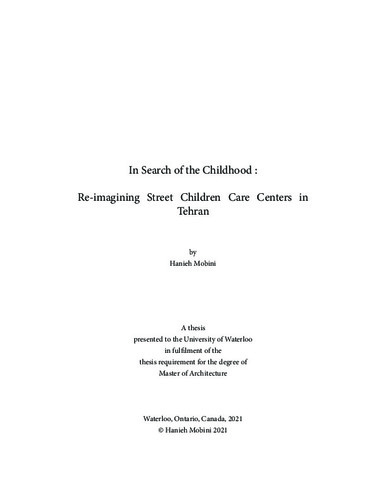| dc.description.abstract | The phenomenon of street children is a serious social issue in developing countries such as Iran. Despite the unavailability of official statistics, unofficial data determines that over 200,000 street children currently settle in Iran’s large cities.
These children face various risks and obstacles, including poverty, hygiene problems, mental health issues, delayed development, and education based on gender, age, ethnicity, and disability. Moreover, most of them are not granted the privilege and right to have a safe home and attend public school, resulting in their social misconduct in the future. Among them, street girls are more vulnerable to ongoing physical and physiological harm such as sexual violence. This group also faces stricter social and cultural limits than males, which restrain their freedom and development in various ways. Thus, the space in which they spend time for rehabilitation should be cautiously programmed and designed, ensuring their safety, comfort, and freedom of activities through their healing process.
Through Archival research, case studies, and based on the literature on street children’s needs and architecture specifications for them, the proposed child center will be designed to rethink the typology of existing centers to be a place more than a shelter or a classroom. It will be developed to become a safe place that reconnects the children with their actual needs and livelihood. The center also hopes to take long-term social measures by offering programs that target illiterate and unemployed mothers in the community.
This thesis aims to use architecture as a device to improve the quality of living and educational experience in street children’s facilities to accelerate their rehabilitation process through spatial design, connection with nature, and introducing Iranian cultural values and metaphors. | en |

